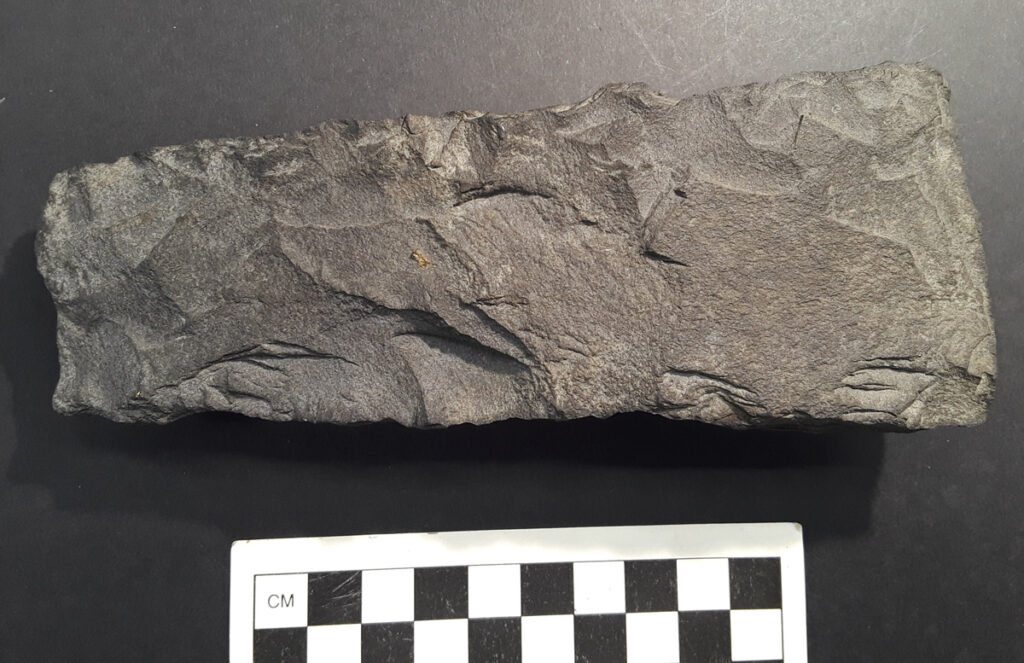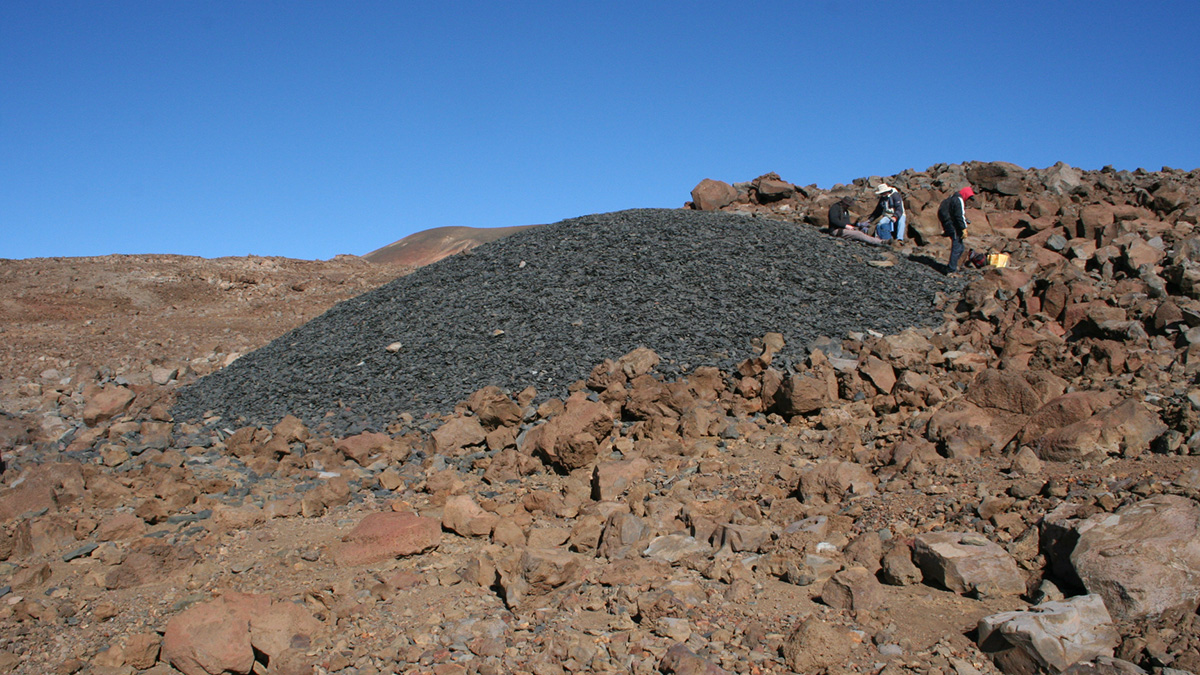An embracing Sky father and Earth mother had many children, one of whom pushed apart their parents to let in the light, according to Māori origin traditions. In one version told to Māori archaeologist Gerard O’Regan of the Ngāi Tahu tribe, an unborn child remains in the womb, his eyes, or whatu, peering out as rocks, or kōwhatu, a Māori word for stone. These words serve as reminders that everything from rivers to animals to stars to people can trace their ancestry to such connections in Māori worldviews.
Elsewhere in Polynesia, a reconstruction of the word is *pofatu, said Aymeric Hermann, an archaeologist at the French National Centre for Scientific Research. He is also cocreator of the Pofatu database, a compilation of geochemical information gleaned from stone tools and source quarries scattered throughout the Pacific that can be matched with one another.
“Looking at the chemistry of the [stone artifacts] lets us know who people [were] in communication with, how frequently, and over what period of time,” said Marshall Weisler, an archaeologist at The University of Queensland in Australia who has contributed data to Pofatu.
Reconstructing Routes
The peopling of the Pacific is “the greatest overwater migration in human history.”
The peopling of the Pacific is “the greatest overwater migration in human history,” said Weisler, “and we see the end of that in Polynesia—the last places on Earth that were colonized by people” (aside from Antarctica, of course).
Languages, cultures, and creation stories share striking similarities across Polynesia, which spans the vast area between Aotearoa (New Zealand), Hawaii, and Rapa Nui (Easter Island)—the vertices of the Polynesian triangle. Yet when Europeans arrived in the Pacific in the 1600s, they didn’t observe much interisland travel, said Hermann. It wasn’t until the 1970s that Polynesians rediscovered their ancestors’ knowledge of navigating across thousands of kilometers of open ocean using only signs from nature.

By collecting and analyzing the geochemistry of stone adzes (a type of woodworking tool) and dating the layers from which they came, archeologists can examine the frequency of artifacts coming from outside their found location, said Weisler. On isles both near and far from the site of an adze, source quarries range from bedrock to boulders.
For example, the Cook Islands house a rock shelter that was occupied for about 400 years. Early on, Weisler explained, artifacts came not only from local sources but also from as far as Samoa and the Marquesas—thousands of kilometers away. As time passed, adzes from afar dwindled, likely because community concerns transitioned from expensive voyages to prioritizing land use and agriculture. This same pattern of early, extensive overseas communication that tapers off played out across Polynesia, analysis revealed.
In another example, the Tuamotus—a thousand-kilometer line of low-lying atolls in French Polynesia—contain no volcanic source rocks for adzes. Any volcanic adze found there, said Weisler, must come from somewhere else. The astonishing variety of sources range from as far as Pitcairn and Hawaii, the latter of which is 4,000 kilometers away with nothing but open ocean in between. Geochemistry has confirmed that the Tuamotus, he said, are “the crossroads of East Polynesia.”
Invasive Analysis
Successfully matching source with stone “is really a niche part of archaeology that requires geological expertise,” said Kekuewa Kikiloi, a Hawaiian archaeologist at the University of Hawai‘i at Mānoa unaffiliated with the Pofatu project.
This matching is what the Pofatu database aims to facilitate, said Hermann, because it culls both source and artifact geochemical data. Once peer-reviewed studies have been published, he said, authors can send data to him via the Pofatu website, which he updates two to three times per year. Several experts in geochemical sourcing for archaeological materials in the Pacific have already contributed data they’ve published, including Weisler and John Sinton, a geochemist at the University of Hawai‘i at Mānoa. In the 2 years since it was created, no studies have been published using Pofatu, although some are forthcoming, Hermann said.
The Pofatu database includes information gained from both destructive and nondestructive techniques. “The most precise way to analyze rock is a destructive technique,” said Sinton. Destructive techniques include a type of X-ray fluorescence (XRF) that requires relatively large aliquots of rock powders and inductively coupled plasma–mass spectrometry (ICP-MS), which typically requires dissolving minute amounts of a sample. Nondestructive techniques involve a different type of XRF that has also been harnessed into a portable instrument for fieldwork. “Archaeologists favor [nondestructive methods] for good reasons,” Sinton said. “They don’t want to destroy precious artifacts.”
In Weisler’s lab, they use dental drills—the ones that get cavities out of your mouth—to obtain milligrams of powder with minimal destruction for ICP-MS analysis. “I’ve been one of the more outspoken people against solely using nondestructive [geochemical methods],” he said. Analyses of basalt artifacts that often show broadly similar chemical signatures need a broader array of modern tools, he argued: The farther away material for adzes might originate, the more potential sources there might be, “so [in many cases] you’ve got to use far more sophisticated and powerful geochemical techniques” than those offered by nondestructive technologies.
Analyzing a Life Force
“When [Māori] look at a rock, rock is not completely an inanimate object. Rock has life force.”
“When we [Māori] look at a rock, rock is not a completely inanimate object,” said O’Regan, who is also curator of Māori at the Otago Museum. “Rock,” he said, “has life force.” For Māori, who often consider requests for destructive and nondestructive analysis on different aspects of heritage, “even though some of the invasive analysis might be really tiny…we ask if it is impacting on the mauri [life force]?”
Though Māori may want to learn more about their ancestors, the spiritual aspects of the stone (which stem partly from origin stories and partly from ancestors who may have handled it) must be balanced with the learning that can come from analysis, O’Regan said. He noted that learning from science can potentially deepen the cultural connection.
This connection to the past, however, can also result in Indigenous Peoples feeling “like it’s their grandfathers’ stuff that [archaeologists] are rummaging through,” said Kikiloi. This is especially true when researchers use destructive techniques on artifacts. Kikiloi said he would hesitate to use Pofatu, instead favoring data sets that do not include any destructive methods. (The University of Hawaiʻi at Hilo maintains such a facility.)
In addition to concerns about destructive versus nondestructive methods, O’Regan worried about how researchers use and contribute to the public database as a whole. In particular, he said databases could cause researchers to dabble in questions of Polynesian archaeology without working directly with Polynesian communities—unlike Hermann and Weisler. “You can look at Indigenous community after Indigenous community,” said O’Regan, “and none of them will say that they have not been adversely impacted by someone else’s interpretation of them at some point.”
—Alka Tripathy-Lang (@DrAlkaTrip), Science Writer

